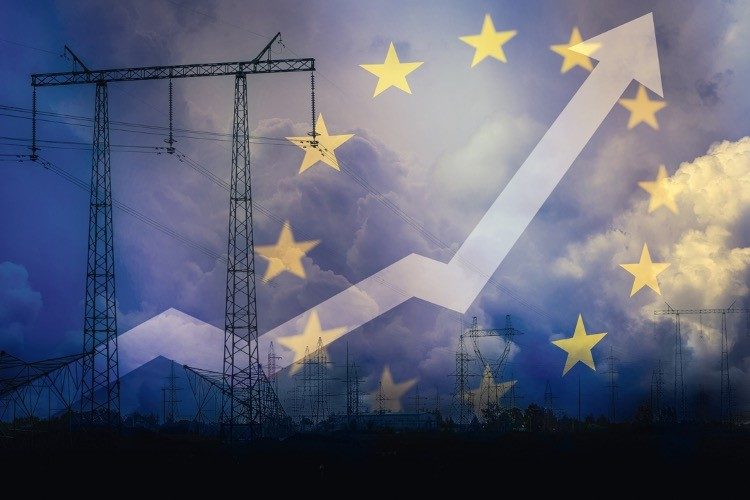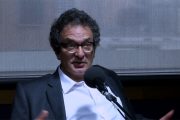
European countries’ bill to supposedly protect households and companies from rising energy costs has risen to nearly €800 billion, researchers said on Monday, asking countries to be more intentional in their spending to combat the energy crunch.
European Union (EU) countries have presently allocated €681 billion in energy crisis spending, while Britain earmarked €103 billion and Norway €8.1 billion since September 2021, based on an analysis by think-tank Bruegel.
The total of €792 billion compares with €706 billion in Bruegel’s last evaluation in November, as countries scrambled to find alternative energy sources after Europe’s comprehensive sanctions packages cut off most Russian oil and gas deliveries to Europe in 2022.
Topping the spending chart was Germany with an expenditure of around €270 billion, a figure that surpassed all other countries. Britain, Italy, and France were the next highest, each spending less than €150 billion. Most other EU states spent a fraction of that amount.
On a per-capita basis, Luxembourg, Denmark, and Germany were the largest spenders.
Currently, the spending allocated by the countries to tackle the energy crisis has now been compared to the EU’s €750 billion Covid-19 recovery fund. The fund, inked in 2020, saw Brussels take on joint debt and pass it onto the bloc’s 27 member states to help counter the effects of the Covid lockdowns.
The latest update on energy expenditures comes amid debates about EU proposals to relax state aid rules even more for “green” technology projects, as Europe hopes to compete with subsidized energy coming from the United States and China.
Those plans have stoked fears in some EU capitals that encouraging more state aid would destabilize the bloc’s internal market. Germany has weathered denunciations over its gigantic energy aid package, which far exceeds what other EU nations can afford.
Bruegel reported that governments had concentrated most of the support on capping the retail price consumers pay for energy, such as value-added tax cuts on petrol or retail power price caps.
Furthermore, the think-tank said that operations had to change because states are fiscally unable to maintain such funding.
“Instead of price-suppressing measures that are de facto fossil fuel subsidies, governments should now foster more income-support policies targeted towards the lowest two quintiles of the income distribution and towards strategic sectors of the economy,” research analyst Giovanni Sgaravatti said.
Last year, a report by International Energy Agency (IEA) chief Fatih Birol and European Commission President Ursula von der Leyen claimed that Europe could face a natural gas shortage of 27 billion cubic meters in 2023. That’s equivalent to almost seven percent of the region’s yearly consumption.
“We may have a problem,” Birol said, amid concerns that Russia, which sent about 60 billion cubic meters of gas to the EU over the course of 2022 even after the sanctions, could completely stop flows in 2023. Adding fuel to the fire would be how a rebooted Chinese economy would impact the natural gas market.
In the study, the IEA claimed that a supply gap of 57 billion cubic meters could surface this year.
About 30 billion of that should be covered by European actions “that are already visibly in motion,” the Paris-based group asserted. That includes major stockpiling and efforts to voluntarily reduce demand for gas by 15 percent between August 2022 and March 2023, according to a CNN report.
That being said, analysts still fear that a deficit could result. After all, the IEA stress test presumed that Russian pipeline gas flows to Europe would stop completely from the start of 2023, that China’s imports of liquified natural gas revert to 2021 levels, and that Europe’s storage facilities are only 30-percent full at the end of this winter.
The remaining shortfall could be mitigated if more attempts are made to boost energy efficiency, boost the adoption of renewables, increase use of heat pumps, and promote other changes in behavior, the IEA stated.
On a different note, while most of the mainstream media has been lambasting Russia for reducing natural gas supplies to Europe, European nations have imposed heavy sanctions on Russia’s government and economy, including its energy exports. What’ more, a report by American investigative journalist Seymour Hersh revealed that it was the United States that took out the Nord Stream Pipeline that was originally constructed to transport natural gas from Russia to Germany through the Baltic Sea, thus sabotaging natural gas flows to Europe.
Hersh, who won a Pulitzer Prize in 1969 for reporting on the Vietnam War My Lai Massacre, claimed that the U.S. Navy, at the behest of the Biden administration, placed explosives that caused huge holes in the main gas pipeline.
Hersh’s piece on his new Substack site, titled “How America Took Out The Nord Stream Pipeline,” asserted the Navy divers operated under the cover of a high-profile mid-summer NATO exercise known as BALTOPS 22. The specially trained, highly skilled deep-water divers installed C4 explosives that could be remotely detonated, which they were, three months later.
Hersh explained that the U.S. government, including Biden’s security advisors, has always opposed the Nord Stream Pipelines, worrying that they undermined Western dominance. In the months preceding the Ukraine-Russia conflict, U.S. concerns escalated. The second of the two pipelines, Nord Stream 2, appeared to be about to come online. Simultaneously, Russia was reportedly gathering troops at the Ukrainian border.
Elaborating in his essay, Hersh said, “Biden’s decision to sabotage the pipelines came after more than nine months of highly secret back and forth debate inside Washington’s national security community about how to best achieve that goal. For much of that time, the issue was not whether to do the mission, but how to get it done with no overt clue as to who was responsible.”
While the White House and the Pentagon have slammed Hersh’s report as fiction, Hersh remained unfazed. In an introductory explanation of his decision to independently post his reports on Substack, he wrote, “I’ve been told my stories were wrong, invented, outrageous for as long as I can remember — but I’ve never stopped. In 2004, after I published the first stories about the torture of Iraqi prisoners at Abu Ghraib, a Pentagon spokesman responded by calling my journalism ‘a tapestry of nonsense.’”



